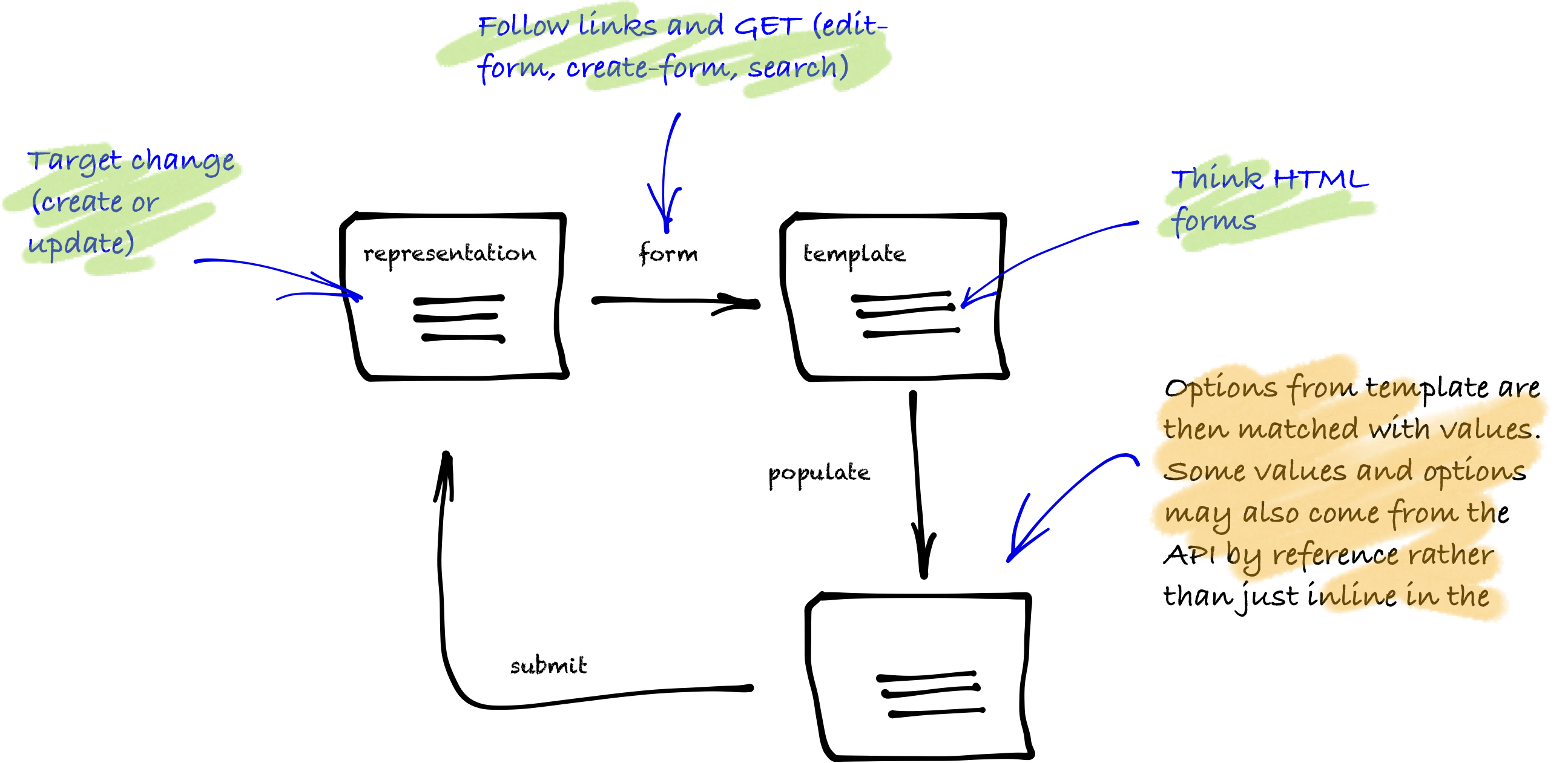Forms Modelling
Hypermedia benefits from affordances. These are hints from the server about what the client is able to ask the server to do. The most underutilised affordance is forms. Forms are templates and in practice are based on HTML forms. In the context of a resource, a form provides message framing details about how to send information back to the server and in what form.
Forms can also provide information to the client on how to display the information when there is human input required.

There are a number of situations that use forms:
- create a resource on a collection
- update a resource
- search (which is to create a resource on a collection)
- change membership in a collection
When modelling hypermedia, resources are modelled as nouns. In these tutorials, forms are usually modelled as links through verbs (eg pay, payment, search) or through the ubiquitious edit-form or create-form. This is in contrast to some microformats that embed the forms in the resource itself (eg HAL-FORMS as _templates attribute).
Finally, the implementation of forms in Semantic Link is based on the collection abstraction. A form representation is a linked representation and, like a collection, will have items.
Heads up! forms need to cater for
HTML forms model most aspects of a hypermedia form:
- field: type, name, value, validations (eg text, password, email, number, url, tel, date, time, range, color—see html spec)
- single (by value)
- enumeration (by value) (eg select)
But HTML also needs a bit more modelling:
- groups
- values/enumerations by reference (that is not inline but found somewhere else via link relations)
Forms submission
Forms are submitted semantically. That is, there are a series of rules/conventions that allow the client to converge on a decision of where and how to submit. Some microformat require explicit rules. An alternative way to look at the problem is to see that (those explicit) rules are merely higher priority and that the client needs a range of options to fallback on. Some of this is because of the design to separate out forms from the originating resource.
Key designs:
- forms are linked from the resource and thus have their own identity
- forms are ideally highly cachable thus by default provide no submission information
- forms are submitted in the context of the orginating resource
- forms can provide override behaviours
Conventions because we are modelling in collections which all submit back on the ‘self’ link on originating resource:
- edit-form is an update of a singleton: PUT
- create-form is a new resource on a collection: POST
- edit-form with type ‘text/uri-list’ is an update on items on a collection: PUT
- edit-form with type ‘application/json-patch+json’ is an update on items in a collection: PATCH
Note: this is a highly constrained implementation. Also, DELETE is assumed to never use forms and to DELETE items on a collection is DELETE a singleton which also removes it from the collection. A PUT/PATCH only updates the collection membership.
The form may be marked up with overrides in the ‘submit’ link relation:
- HRef is an explicit resource to submit to
- Type is an explicit mime-type to submit using
- Method is an explicit override (POST, PUT, PATCH)